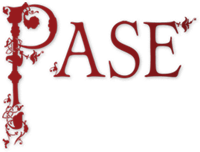Table of Contents
Top of page
Name
Summary
Distribution Map
Property List
Profile
Bibliography
Bottom of page
Leofmann 15
Leofmann ‘of Soberton’ (Hants), fl. 1053x1066
Male
DWP
4 of 5
Name
Summary
Leofmann 15 held two estates in south Hampshire TRE with a combined assessment of 6½ hides and a value of £5.Distribution map of property and lordships associated with this name in DB
List of property and lordships associated with this name in DB
Holder 1066
| Shire | Phil. ref. | Vill | DB Spelling | Holder 1066 | Lord 1066 | Tenant-in-Chief 1086 | 1086 Subtenant | Fiscal Value | 1066 Value | 1086 Value | Conf. | Show on Map |
|---|---|---|---|---|---|---|---|---|---|---|---|---|
| Hampshire | 1,12 | Hayling Island | Leman | Leofmann 'of Soberton' | Edward, king | William, king | - | 2.50 | 2.00 | 3.50 | B | Map |
| Hampshire | 1,13 | Soberton | Leman | Leofmann 'of Soberton' | Godwine, earl | William, king | - | 4.00 | 3.00 | 4.00 | B | Map |
| Totals | ||||||||||||
Profile
Leofmann 15’s largest estate was one of four TRE estates at Soberton, among the hill-spurs and low ground along the east bank of the River Meon in south Hampshire. The place-name Soberton derives from Old English sūð-beretūn ‘south grange farm’, coined originally in relation to a royal estate that included the hundredal manor of Meonstoke (Coates 1989: 151; Lavelle 2004: 15).By the mid-eleventh century, however, this part of Soberton was in the hands of Earl Godwine (Godwine 51), from whom Leofmann held it and ‘could not withdraw’, indicating that he was a dependent tenant. Earl Godwine died in 1053 but DB shows that Leofmann was still holding the estate when Earl Harold (Harold 3) became king and seized it from him; it is likely that Leofmann held the estate under Godwine’s widow Gytha (Gytha 1) during the intervening thirteen years (cf. Williams 1980: 177). DB also records the claim that this estate was ‘in parage in Chalton’, an extensive estate held by Harold TRE, so it may be that Leofmann’s estate formed part of the Godwine family lands and that this provided Harold with a justification to seize it when he became king in 1066.
The only other estate held TRE by a man called Leofmann was the smallest of four estates at Hayling Island, a predominantly flat expanse of light soils and marsh separated by a narrow channel from the Hampshire coast; his estate was probably in the area later known as South Hayling or Southwood (Page 1908: 129, 131; Coates 1989: 89). DB records him as holding it of King Edward (Edward 15) and in parage; this implies that the estate was Leofmann’s by inheritance but does not clarify the nature of the king’s lordship over him, whether by commendation or dependent tenure or both.
The unusual name Leofmann and the short distance of 13 miles between Soberton and Hayling Island combine to render it probable that both estates were held by the same man, Leofmann 15. This probability is further increased by a parallel in the history of the estates immediately before the Conquest, because the estate at Hayling Island was also taken from Leofmann by Harold when he became king and, like that at Soberton, added to his farm. It is distinctly possible, therefore, that it was the death of King Edward and the removal of his protection that left Leofmann 15 vulnerable to Harold’s claims on his estates.
Bibliography
Coates 1989: R. Coates, The Place-Names of Hampshire (London, 1989)
Lavelle 2004: R. Lavelle, ‘All the king’s men? Land and royal service in eleventh-century Wessex’, Southern History 26 (2004)
Page 1908: A History of the County of Hampshire: Volume 3, ed. W. Page (London, 1908)
A. Williams, ‘Land and power in the eleventh century: the estates of Harold Godwineson’, Anglo-Norman Studies 3 (1980), 171-87
